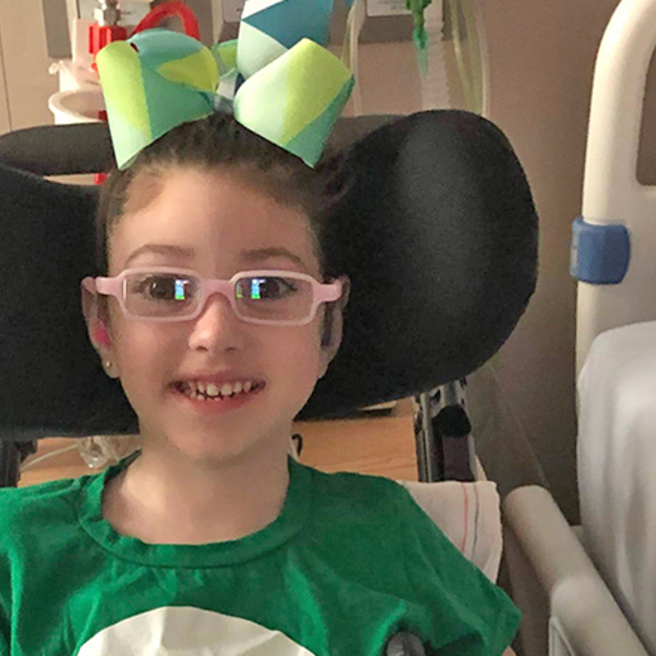What is microcephaly?
Microcephaly is a condition in which a baby's head is much smaller than normal for an infant of that age. Micro means small and cephaly refers to the head. Microcephaly can be congenital, meaning it is present at birth, or acquired, meaning that the baby’s head was a normal size at birth but did not grow appropriately over time.
In babies with microcephaly, the brain is generally smaller than normal. This may be because the brain did not develop properly during pregnancy. It may also be due to an injury that happened to the brain during pregnancy or around the time of birth. Children with microcephaly often have developmental delays or intellectual disabilities. There are some children with small heads, however, who do not have any related neurologic or developmental problems.
What causes microcephaly?
Microcephaly is generally a result of early brain injury during fetal development.
- Microcephaly may be inherited. A gene defect that causes abnormal brain development can be passed down from a child’s parents.
- During pregnancy, some infants may be exposed to certain things that affect the normal development of the head, including:
- Hazardous chemicals or harmful substances
- Methylmercury poisoning
- Severe malnutrition or lack of proper vitamins and nutrients
- Infections such as toxoplasmosis, rubella, cytomegalovirus, herpes, or varicella (sometimes called “TORCH” infections)
- Use of prescription or illegal drugs and alcohol consumption during pregnancy
- Untreated phenylketonuria
- Acquired microcephaly occurs after birth and is usually caused by various brain injuries such as lack of oxygen or infection.
What are the symptoms of microcephaly?
In addition to having a head that is much smaller than normal for an infant of that age, the following are the most common symptoms of microcephaly. However, each child may experience symptoms differently, since microcephaly is often accompanied by additional neurologic problems. Symptoms may include:
- High-pitched cry
- Poor feeding
- Seizures
- Increased muscle tone (tightness or stiffness) in the arms and legs caused by continuous muscle contraction (spasticity)
- Developmental delays
- Intellectual disability
The symptoms of microcephaly may resemble other conditions or medical problems. Always consult your child's doctor for a diagnosis.
How is microcephaly diagnosed?
Microcephaly may be diagnosed before birth by prenatal ultrasound. Ultrasounds are used to view internal organs as they function, and to assess blood flow through various vessels. However, ultrasound is not always accurate in assessing microcephaly.
Often, microcephaly is not obvious on an ultrasound until late in pregnancy. In these cases, microcephaly will be diagnosed at birth or later in infancy when the baby's head circumference is smaller than normal for her age and gender.
If your doctor suspects your child has microcephaly, he or she will obtain a complete prenatal and birth history of your child. Your doctor may also ask if there is a family history of microcephaly or other medical problems such as genetic disorders.
Diagnostic tests that may be performed to confirm the diagnosis of microcephaly and identify abnormalities in the brain include:
- Head circumference. This measurement is compared with a scale for normal growth and size.
- X-ray. A diagnostic test which uses invisible electromagnetic energy beams to produce images of internal tissues, bones, and organs onto film.
- Computed tomography scan (also called a CT or a CAT scan). A diagnostic imaging procedure that uses a combination of X-rays and computer technology to produce horizontal, or axial, images (often called slices) of the body. A CT scan shows detailed images of any part of the body, including bones, muscles, fat, and organs. CT scans are more detailed than general X-rays.
- Magnetic resonance imaging (MRI). A diagnostic procedure that uses a combination of large magnets, radiofrequencies, and a computer to produce detailed images of organs and structures within the body.
- Blood tests
- Urine tests
Your child’s doctor will also ask about developmental milestones since microcephaly can be associated with developmental problems, such as intellectual disability. Developmental delays may require further medical follow-up to address any underlying problems.
Treatment and disease management
There is no treatment for microcephaly that will return a baby's head to a normal size or shape. Since microcephaly is a lifelong condition that is not correctable, care includes focusing on preventing or minimizing disabilities and maximizing your child's capabilities at home and in the community. Positive reinforcement will encourage your child to strengthen his self-esteem and promote as much independence as possible.
The full extent of the problem may not be completely understood immediately after birth, but may be revealed as your child grows and develops.
Children born with microcephaly require frequent examinations and diagnostic testing by their doctor to monitor the development of the head as the child grows. The medical team works hard with your family to provide education and guidance to improve the health and well-being of your child.
Most children with microcephaly should see a pediatric neurologist to help assess the underlying cause and to identify any co-existing problems such as developmental delays. Children who have delays in their motor or language skills may benefit from working with a physical therapist, occupational therapist or speech therapist.
If a genetic cause of microcephaly is suspected, genetic counseling may be recommended by your child’s doctor to provide information on the recurrence risks for the disorder.
Resources to help
Division of Neurology Resources
We have created resources to help you find answers to your questions and feel confident with the care you are providing your child.

